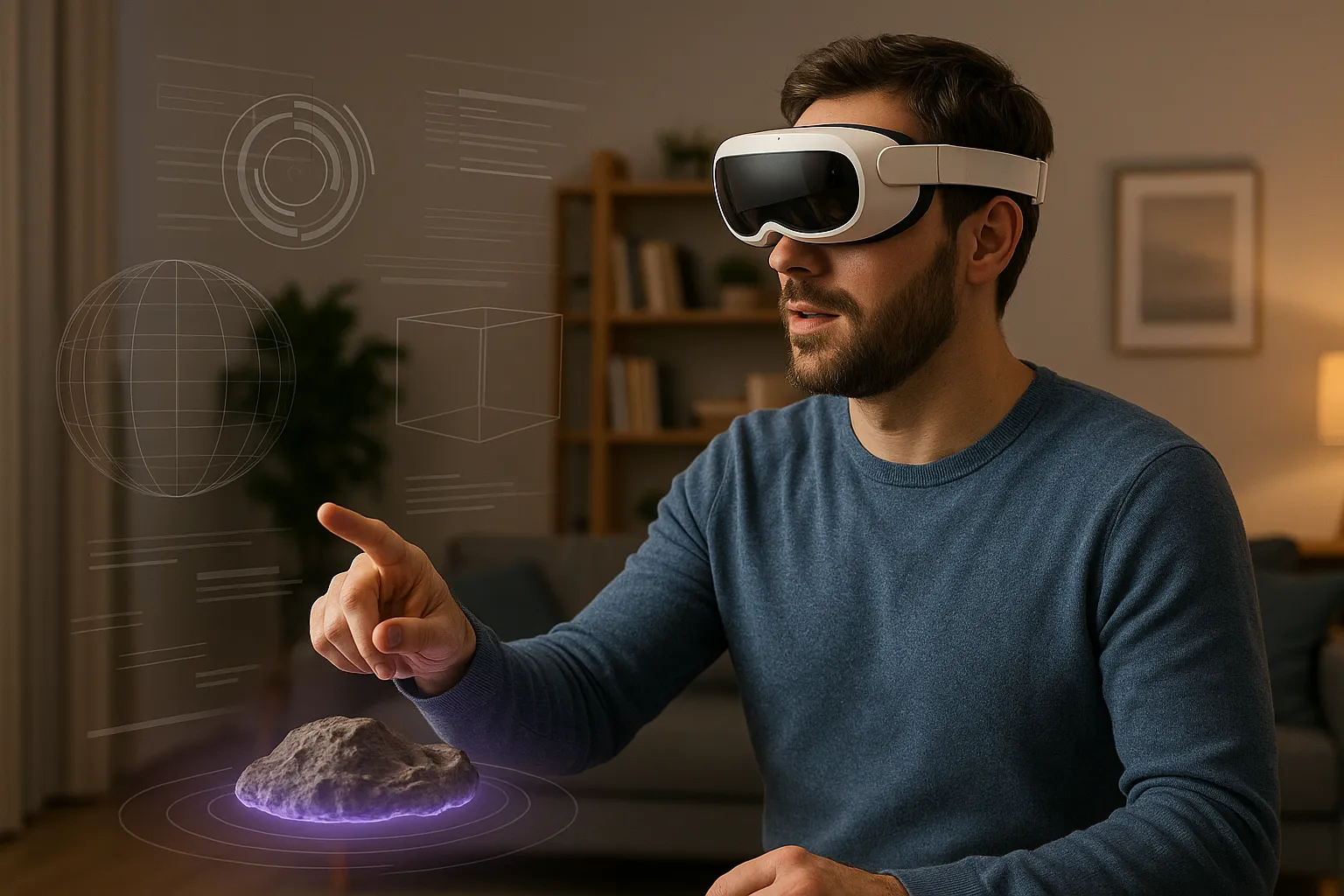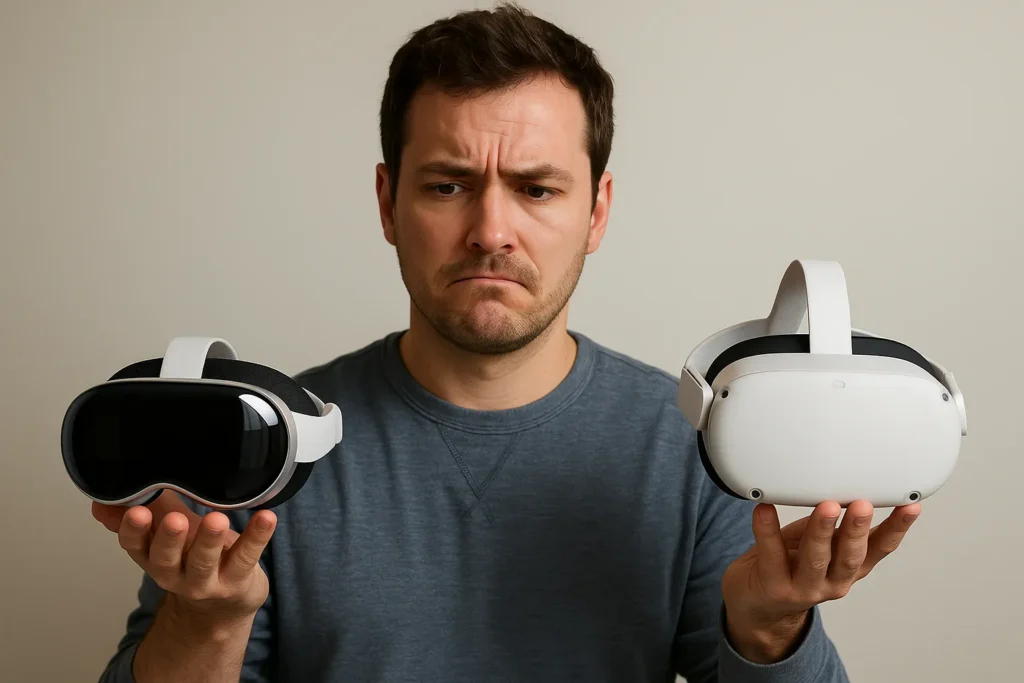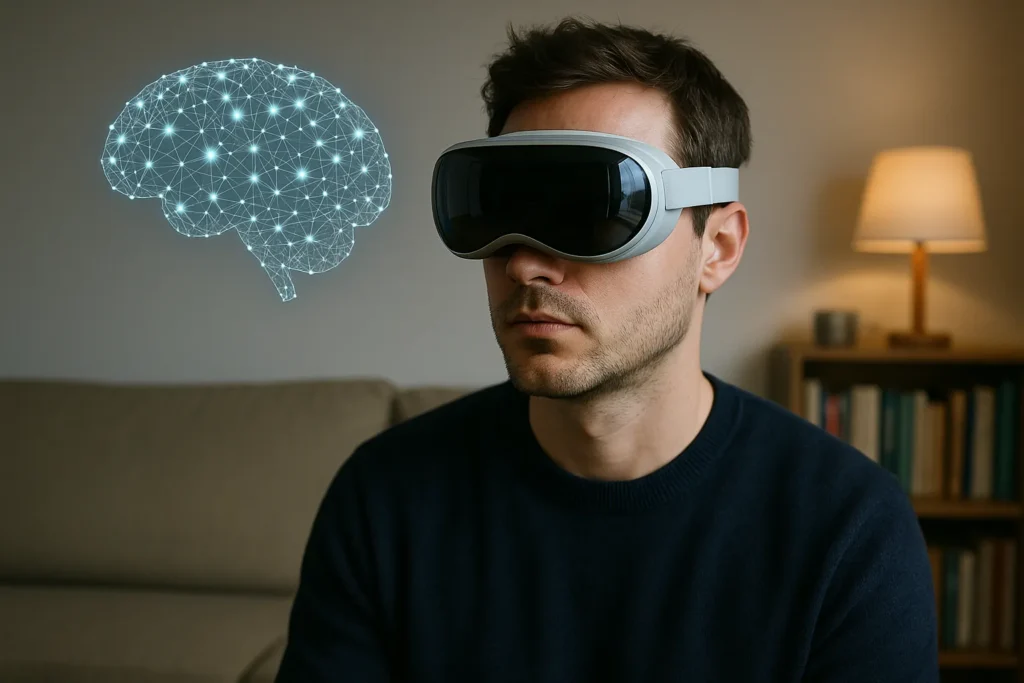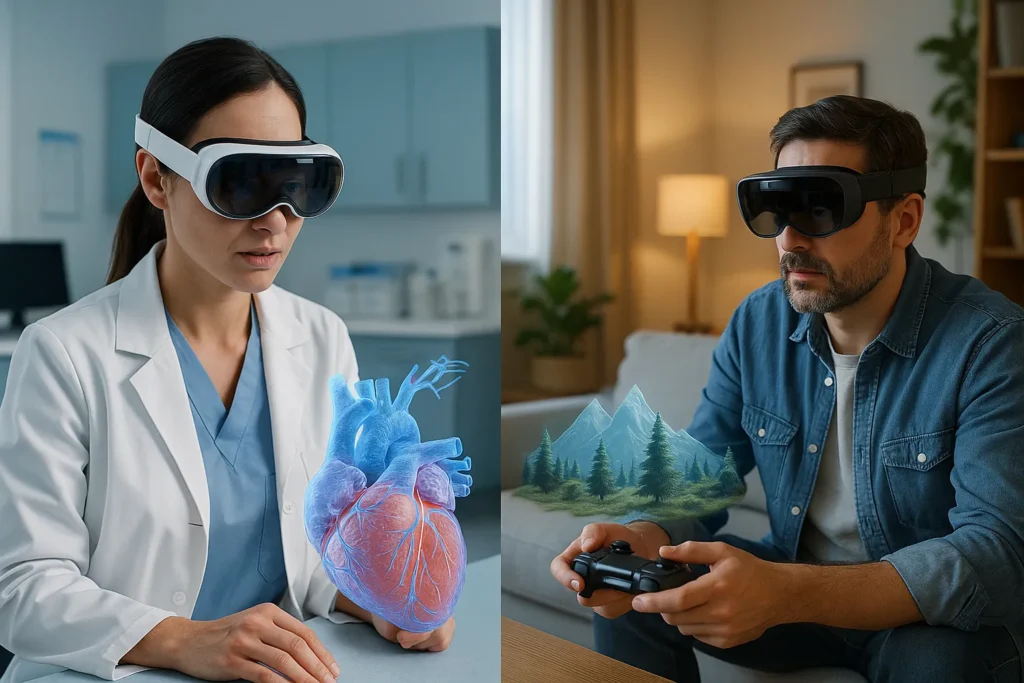
Imagine reaching out and touching digital stuff floating in mid-air. Also, picture moving 3D objects with your hands, no controllers needed.
This is spatial computing. What’s so special about it? Here is an easier way to go about it. Virtual reality (VR) traps users in fake worlds, and augmented reality (AR) just adds digital stickers to reality. However, spatial computing creates natural interactions between you and technology.
We are Movea Tech. Our mission is to help users understand cutting-edge motion-sensing technology. After exploring computing systems for years, we know how to make complex stuff simple.
Here’s what we’ll cover:
Ready? Let’s dive into the future of computing, starting with the basics that will change everything.
Most people think spatial computing is just fancy virtual reality. They’re wrong.
Here’s what sets spatial computing apart from everything you’ve tried before:
After trying out these technologies extensively, we found something interesting. Traditional virtual reality makes you learn new ways to interact, but Spatial computing learns from you instead.
The difference is simple. AR and VR make you point, click, and learn their rules. Spatial computing works the way you naturally move and think.
This changes everything for you. You don’t have to block out your real world anymore. Spatial computing uses your actual space as part of how it works.
Now let’s see which spatial computing devices actually deliver on these promises.

The U.S. spatial computing market reached $35.9 billion in 2023, showing huge demand for devices that work well. With that much money at stake, Apple and Meta are fighting hard to win users over.
When you compare them side by side:
Wearing the Vision Pro feels like having superpowers. The reason is simple: look at something, pinch your fingers, and it responds instantly. That’s possible because the eye tracking technology knows exactly where you’re looking.
How? The device has 12 cameras and 5 sensors working together to track your every movement. This hardware setup lets you control everything with just your hands and eyes. Apple Vision Pro creates a completely new way to interact with digital content.
The result feels natural because no controllers get in your way. Instead, your gestures become the interface itself. The hand tracking works so well that you forget you’re using spatial computing devices at all.
Quest takes a different approach to user experience design. It’s more like a gaming console that happens to do spatial computing because this gaming focus shows in how Meta built the system.
Instead of Apple’s controller-free approach, Quest focuses on mixed reality through color passthrough technology, and you’ll still use handheld controllers for most tasks.
The upside of this simpler approach? The price won’t break your budget at $299. While Quest does offer hand tracking, it works better for gaming than for precise work. Which makes sense since the whole system excels at making virtual reality fun and accessible for everyone.
So what does this all mean? Apple Vision Pro delivers premium spatial computing for people who want the latest tech. Meta Quest delivers solid entry-level access for people who want to try things out.
Your budget usually decides which path makes sense for you.

Those powerful devices we just covered are hiding something incredible. Machine learning technology works behind the scenes, turning simple sensor data into experiences that feel like magic.
Let’s find out how spatial computing actually works step by step:
Sensors capture information about your movements and surroundings in real time. This happens through teamwork between different types of sensors. For example, cameras track where your hands go, while other sensors detect when you move your head. Meanwhile, depth sensors figure out what’s around you in your physical space.
Machine learning algorithms process this spatial data instantly without delays. Think of this as the brain of the operation. The system looks at millions of tiny details every second from all those sensors. Then it turns that raw information into patterns that actually make sense to computers.
The system learns your patterns and predicts what you want to do next. After watching how you naturally reach for things, the computer starts recognizing your personal habits. Over time, it picks up on exactly how you like to move and interact with objects around you.
The interface responds before you even finish your gesture. Based on everything it figured out about you, the system makes smart guesses about what you’re trying to do. It actually starts the action while your hand is still moving toward what you want to touch.
This process creates a spatial UX that feels intuitive to users. Because the interaction happens so fast, your brain thinks the computer is reading your mind. Its result is impressive as well. Technology that adapts to you instead of making you adapt to it.
This technology becomes even more impressive when you see where it’s making a real impact today.

Ever wonder where all this fancy spatial computing stuff actually gets used? Turns out, it’s working in more places than you think.
Here’s where spatial computing applications are making a real difference today:
These spatial computing applications give users an immersive experience that feels natural. Picture this: you’re fixing a machine and the repair instructions appear right where you need them, or you’re shopping and that couch actually fits perfectly in your living room before you buy it.
When digital stuff works with your real world instead of against it, suddenly technology stops being a barrier and starts being helpful. That’s the real breakthrough here.
So where do you go from here? The spatial computing world is big, but you don’t have to jump in all at once.
The future looks pretty exciting for this technology. Why? Computing systems will get smarter and cheaper over the next few years. As that happens, spatial computing devices will work better, especially as more developers create apps for them.
The end result? Users will find the technology feels as normal as scrolling through social media within just a few years.
From our experience watching emerging technologies grow, here’s what we suggest. Start with something simple, like AR apps on your current phone. Then maybe try out devices at stores that offer demos. Keep an eye on industry trends to see where things are headed.
That’s exactly why we built Movea Tech. We help people like you stay ahead of the curve with motion-sensing innovations and immersive interfaces. Our job is to make the complicated stuff simple so you can focus on what these technologies mean for your life.
The spatial computing future is coming whether you’re ready or not.